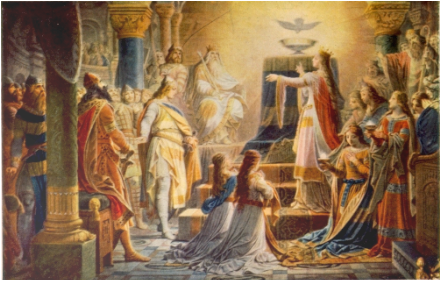|
|
T.S. Eliot's post-World War One text The Waste Land (1922) is brimming with references to various historical events, literary works, and significant locations. One of the most interesting, although obscure, sets of allusions that the poem makes is to the Arthurian legend of the quest for the Holy Grail—the cup Jesus used at the last supper, which caught and held his blood during the crucifixion.
Eliot structures the poem to mimic the quest, and the work pays homage to the characters and scenery of the myth—the Fisher King and his waste land. Thus even the poem's title "The Waste Land" is a key pillar of the story. Eliot draws a compelling picture of Europe after the First World War by describing the legendary Fisher King's waste land. In both Eliot's post-war London and the mythological devastated kingdom, people sought something mystical to cling to that would revitalize the land and bring back the normalcy and prosperity of pre-disaster times. This would be the Grail. |

